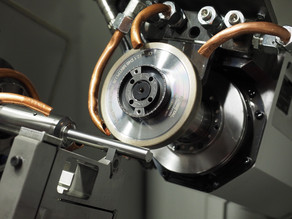Simulation-based tool and process design for microfinishing with metal-bonded honing tools (Transfer SimHonen) (Projectnumber: 450792335)
This transfer project is based on the basic projects "Experimental and simulation-supported basic investigations on surface structuring by short and long stroke honing". Building on the previous results, investigations are being carried out into the production of crowned contours using microfinishing and simulation models are being developed for prototypical process and tool design. The knowledge gained so far is to be transferred prototypically to an industrial application and a new tool concept as part of the transfer project. The Institute of Machining Technology (ISF) and the Chair XIV (LS XIV), together with the companies NAGEL Maschinen- und Werkzeugfabrik GmbH, ELGAN-Diamantwerkzeuge GmbH & Co. KG and Alicona Imaging GmbH will carry out the necessary research and development work within the framework of the transfer project.
The central objective of the project is the experimental and simulative tool and process design for the targeted setting of a desired shape on shaft shoulders by means of microfinishing, taking into account the desired topography. The basis of the investigations is a newly developed tool from the project partner ELGAN, which is characterised by its special structure.
Based on the previous findings and the developed simulation model from the previous basic research project, the transfer to the industrial application case takes place here. The simulation developments take into account both tool wear and a more precise modelling of the process forces depending on influencing parameters such as the use of cooling lubricant. The experimental investigations concern the analysis of the interactions of tool specifications and process parameters during microfinishing with metal-bonded honing stones. Based on these findings, the simulation model is extended to predict the target variables of ballous shape and surface topography when varying the tool and process parameters. In this context, the tool and process analysis is used to build the simulation model, which in turn can lead to the reduction of experimental trials in future tool and process design and optimisation.




![[Translate to English:] [Translate to English:]](/storages/isf-mb/_processed_/4/8/csm_Schleifscheiben_8bb5d31229.jpg)